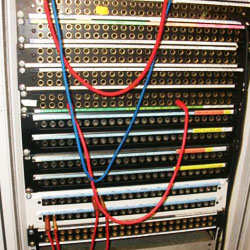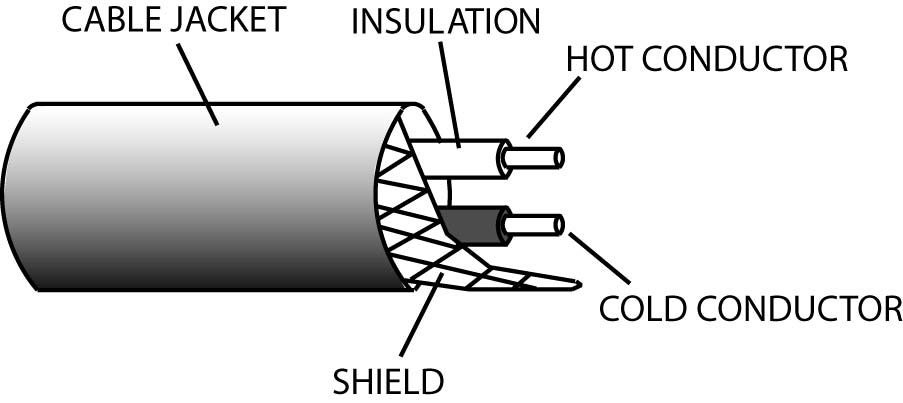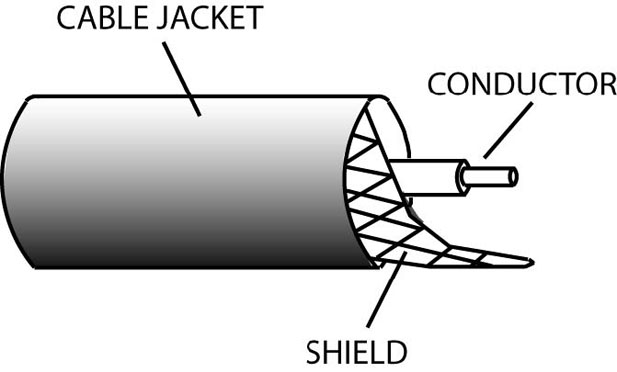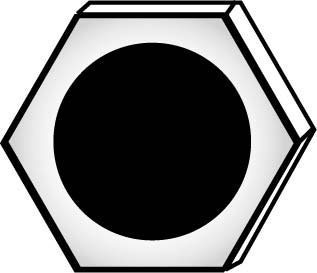An audio system has so many cables and connectors, it’s easy to become confused.
What plugs into what?
This article will help you sort out the various types of audio cables and connectors.
Cables are assemblies of wires; they carry electric signals from one audio component to another.
Connectors link together to form a temporary path for the signal to flow from one component to another.
Cable Construction
Audio cables are usually made of one or two insulated conductors (wires) surrounded by a wire-mesh shield which reduces hum.
Outside the shield is a soft plastic or rubber insulating jacket (Fig. 1).
Cables are designed to carry signals that are either balanced or unbalanced.
Cables For Balanced And Unbalanced Signals
A cable for a balanced signal (Fig. 1) uses two conductors to carry the signal, surrounded by a shield.
An cable for an unbalanced signal has a single conductor surrounded by a shield (Fig. 2). In this case, both the center conductor and shield carry the signal.
An example of a cable for balanced signals is a mic cable.
An example of an cable for an unbalanced signal is a guitar cord. A cable for a balanced signal (Fig. 1) is usually called a balanced line.
A balanced line rejects hum better than an unbalanced line, but an unbalanced line under 10 feet long usually provides adequate hum rejection and costs less.
Signal Levels
A cable carries one of these four signal levels or voltages:
• Mic level is a weak signal. A microphone puts out a mic-level signal. It’s typically about 2 millivolts or .002 volt.
• Instrument level is a fairly weak signal. An electric guitar or synth puts out an instrument-level signal. It’s about 50 millivolts, or .050 volt.
• Line level is a moderately strong signal. An electronic device puts out a line- level signal. Some electronic devices are a mixer, recorder, effects device, and a mic preamp Geek speak: In unbalanced equipment, line level is 0.316 volt (also called – 10 dBV). In balanced equipment, line level is 1.23 volts (also called +4 dBu).
• Speaker level is a strong signal. A power amplifier produces a speaker-level signal. It’s about 1 to 1000 watts, or about 3 to 90 volts.
Cable Connectors And Chassis Connectors
Some connectors are part of cables; they are called cable connectors. Other connectors are built into equipment chassis; they are called chassis connectors.
Cable connectors mate with (plug into) chassis connectors. Several types of connectors are used in audio. We’ll describe them on the following pages.




















